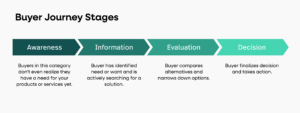What Is Customer Journey Analysis and Why Should You Care?
Customer journey analysis traces every interaction a buyer makes, from first contact through purchase and beyond, to build a complete picture of their experience. It combines qualitative feedback and quantitative data to reveal moments of confusion, delight, or drop-off.

Organizations that focus on improving customer journey analysis report measurable business gains. For example, 84 percent of companies that work to enhance customer experience see revenue increases.
The Business Impact of Customer Journey Analysis
Investing in customer journey analysis pays off in loyalty and revenue. Companies with exceptional customer experience generate 5.7 times more revenue than competitors who lag behind.

A 5 percent increase in customer retention can drive a 25 to 95 percent boost in profitability according to Bain & Company. Those figures underline why deep journey insights matter.
How Do You Map Your Customers’ Journeys to Reveal Gaps?
You start by collecting touchpoint data such as web analytics, CRM entries, social mentions, and support tickets, then visualizing it in a coherent flow. The visual map acts like a blueprint of customer behavior, showing detours, backtracking, and dead ends that signal friction.
Gathering and Integrating Data
Pull your customer feedback surveys, session recordings, and transaction logs into one dashboard. Connecting Google Analytics, Salesforce, and survey tools prevents data silos and ensures you never miss a key insight.
Visual Mapping Techniques
Swimlane diagrams separate actions by channel while Sankey charts show volume through each step. These visuals let you spot where more than 15 percent of users pause or loop back, indicating unclear instructions or missing information. Regular updates also ensure the map reflects new campaigns, features, or shifts in customer behavior.
Where Do Friction Points and Channel Handoffs Hide?
Friction often shows up when customers switch channels. Mobile visitors may start on your app and then move to the desktop when checkout feels too slow. In 2024, 70 percent of online shopping carts were abandoned before purchase. According to Sellers Commerce, this happens because the checkout process took longer than users were willing to wait. Mobile users also have the highest abandonment rate at 85.65 percent, largely due to non-optimized mobile experiences. Addressing those handoff failures like inconsistent messaging or lost session data can reclaim significant revenue.
Which Touchpoints Are Adding Unnecessary Steps?
Every extra click or form field raises the risk of drop-off. Baymard Institute reports that 18 percent of shoppers abandon their carts solely because checkout flows feel too long or complicated.
Audit your process to identify pages or confirmations that add time without boosting conversions. Removing a redundant review screen, for instance, has helped some e-commerce sites cut cart abandonment by up to 8 percent.
How Can Data-Driven Analysis Uncover Micro-Journeys?
Micro-journeys are small repeat loops within the broader path, such as repeatedly visiting your FAQ page or toggling between pricing tiers. These loops point to unmet needs or unclear messaging.
Leveraging Analytics and AI
Apply clustering algorithms to interaction logs to surface frequent micro-journeys. If 15 percent of users loop between your pricing page and chat widget, you know to clarify pricing tiers.
Prioritizing Micro-Journey Fixes
Rank micro-journeys by frequency and impact. Fix the top loops first to remove common pain points and improve overall flow.
What Positive Touchpoints Can You Leverage for Growth?
Not all findings are about fixes. Identify moments where customers express delight, such as a personalized onboarding email or a surprise gift with their first order. Our FREE Mini-Audit will provide a better picture of your customer success and reveal actionable insights into what’s really working.
Scale the best experiences by applying our actionable tips across similar touchpoints and track the changes in net promoter score to measure impact.
Which Tools and Techniques Make Analysis Easier?
The right platform accelerates insights. Prioritize journey analytics suites with real-time visualization, AI-driven anomaly detection, and native connectors to your data sources.
Top Platforms to Consider
- Adobe Journey Optimizer for scalable real-time orchestration
- Microsoft Dynamics 365 Customer Insights for unified data layering
- Mixpanel for event-driven micro-journey tracking
Evaluate tools on integration ease, collaboration features, and configurability. A tightly aligned toolset reduces setup time and ensures adoption.
How Can Huckleberry Consulting Services Enhance Your Customer Journey Analysis?
Book an appointment to explore how customer journey analysis uncovers your most pressing gaps. During this call, we’ll review your current touchpoints and identify quick wins to boost satisfaction and loyalty.
We combine analytics with human insight to turn existing clients into growth drivers. By mapping every interaction, we show you where to deepen engagement and reduce churn.
If you’re unsure how to shift from firefighting support tickets to a proactive success strategy, we guide your Sales, Marketing, and Customer Success teams through a structured transition that feels seamless and rewarding.
Schedule a call with our founder, Alex Booth, and start transforming your customer journey analysis into measurable outcomes.

